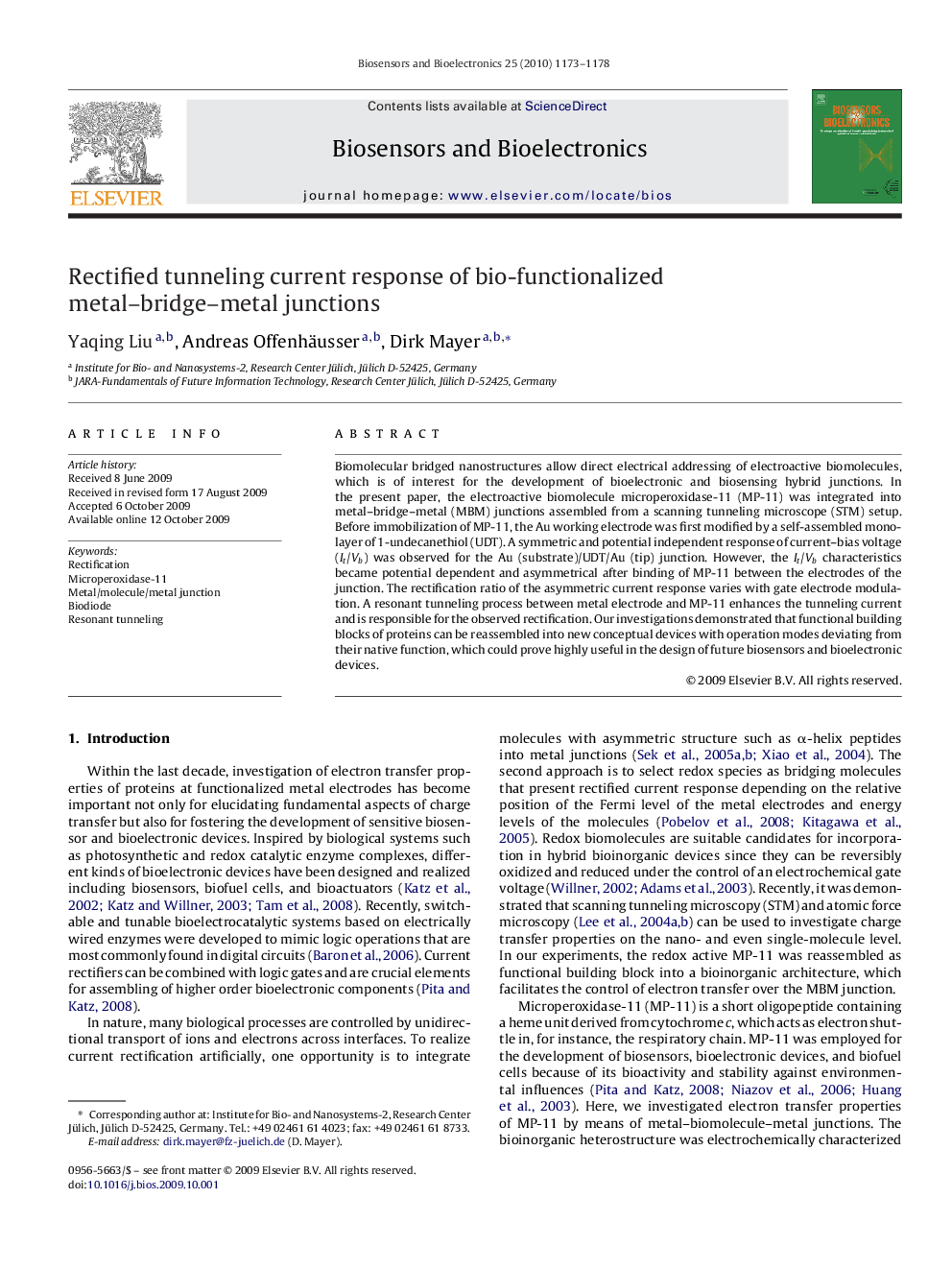| Article ID | Journal | Published Year | Pages | File Type |
|---|---|---|---|---|
| 868814 | Biosensors and Bioelectronics | 2010 | 6 Pages |
Biomolecular bridged nanostructures allow direct electrical addressing of electroactive biomolecules, which is of interest for the development of bioelectronic and biosensing hybrid junctions. In the present paper, the electroactive biomolecule microperoxidase-11 (MP-11) was integrated into metal–bridge–metal (MBM) junctions assembled from a scanning tunneling microscope (STM) setup. Before immobilization of MP-11, the Au working electrode was first modified by a self-assembled monolayer of 1-undecanethiol (UDT). A symmetric and potential independent response of current–bias voltage (It/Vb) was observed for the Au (substrate)/UDT/Au (tip) junction. However, the It/Vb characteristics became potential dependent and asymmetrical after binding of MP-11 between the electrodes of the junction. The rectification ratio of the asymmetric current response varies with gate electrode modulation. A resonant tunneling process between metal electrode and MP-11 enhances the tunneling current and is responsible for the observed rectification. Our investigations demonstrated that functional building blocks of proteins can be reassembled into new conceptual devices with operation modes deviating from their native function, which could prove highly useful in the design of future biosensors and bioelectronic devices.
